1. Pusic AL, Cemal Y, Albornoz C, Klassen A, Cano S, Sulimanoff I, et al. Quality of life among breast cancer patients with lymphedema: a systematic review of patient-reported outcome instruments and outcomes. J Cancer Surviv. 2013; 7:83–92. PMID:
23212603.

2. Cemal Y, Jewell S, Albornoz CR, Pusic A, Mehrara BJ. Systematic review of quality of life and patient reported outcomes in patients with oncologic related lower extremity lymphedema. Lymphat Res Biol. 2013; 11:14–19. PMID:
23531180.

3. Deura I, Shimada M, Hirashita K, Sugimura M, Sato S, Sato S, et al. Incidence and risk factors for lower limb lymphedema after gynecologic cancer surgery with initiation of periodic complex decongestive physiotherapy. Int J Clin Oncol. 2014; 7. 04. [Epub]. DOI:
10.1007/s10147-014-0724-0.

4. Kim SJ, Yi CH, Kwon OY. Effect of complex decongestive therapy on edema and the quality of life in breast cancer patients with unilateral leymphedema. Lymphology. 2007; 40:143–151. PMID:
18062617.
5. Kim SJ, Park YD. Effects of complex decongestive physiotherapy on the oedema and the quality of life of lower unilateral lymphoedema following treatment for gynecological cancer. Eur J Cancer Care (Engl). 2008; 17:463–468. PMID:
18637114.

6. Gurdal SO, Kostanoglu A, Cavdar I, Ozbas A, Cabioglu N, Ozcinar B, et al. Comparison of intermittent pneumatic compression with manual lymphatic drainage for treatment of breast cancer-related lymphedema. Lymphat Res Biol. 2012; 10:129–135. PMID:
22984910.

7. International Society of Lymphology. The diagnosis and treatment of peripheral lymphedema: 2013 Consensus Document of the International Society of Lymphology. Lymphology. 2013; 46:1–11. PMID:
23930436.
8. Ryan M, Stainton MC, Jaconelli C, Watts S, MacKenzie P, Mansberg T. The experience of lower limb lymphedema for women after treatment for gynecologic cancer. Oncol Nurs Forum. 2003; 30:417–423. PMID:
12719742.

9. Badger C, Preston N, Seers K, Mortimer P. Physical therapies for reducing and controlling lymphoedema of the limbs. Cochrane Database Syst Rev. 2004; (4):CD003141. PMID:
15495042.

10. Demirtas Y, Ozturk N, Yapici O, Topalan M. Comparison of primary and secondary lower-extremity lymphedema treated with supermicrosurgical lymphaticovenous anastomosis and lymphaticovenous implantation. J Reconstr Microsurg. 2010; 26:137–143. PMID:
20013596.

11. Hwang JH, Kwon JY, Lee KW, Choi JY, Kim BT, Lee BB, et al. Changes in lymphatic function after complex physical therapy for lymphedema. Lymphology. 1999; 32:15–21. PMID:
10197323.
12. Lasinski BB, McKillip Thrift K, Squire D, Austin MK, Smith KM, Wanchai A, et al. A systematic review of the evidence for complete decongestive therapy in the treatment of lymphedema from 2004 to 2011. PM R. 2012; 4:580–601. PMID:
22920313.

13. Ridner SH. Quality of life and a symptom cluster associated with breast cancer treatment-related lymphedema. Support Care Cancer. 2005; 13:904–911. PMID:
15812652.

14. Rowlands IJ, Beesley VL, Janda M, Hayes SC, Obermair A, Quinn MA, et al. Quality of life of women with lower limb swelling or lymphedema 3-5 years following endometrial cancer. Gynecol Oncol. 2014; 133:314–318. PMID:
24631452.
15. Sitzia J, Sobrido L. Measurement of health-related quality of life of patients receiving conservative treatment for limb lymphoedema using the Nottingham Health Profile. Qual Life Res. 1997; 6:373–384. PMID:
9290304.
16. Franks PJ, Moffatt CJ, Doherty DC, Williams AF, Jeffs E, Mortimer PS. Assessment of health-related quality of life in patients with lymphedema of the lower limb. Wound Repair Regen. 2006; 14:110–118. PMID:
16630098.

17. Hwang KH, Jeong HJ, Kim GC, Sim YJ. Clinical effectiveness of complex decongestive physiotherapy for malignant lymphedema: a pilot study. Ann Rehabil Med. 2013; 37:396–402. PMID:
23869338.

18. Hwang JM, Hwang JH, Kim TW, Lee SY, Chang HJ, Chu IH. Long-term effects of complex decongestive therapy in breast cancer patients with arm lymphedema after axillary dissection. Ann Rehabil Med. 2013; 37:690–697. PMID:
24236257.

19. Adriaenssens N, Buyl R, Lievens P, Fontaine C, Lamote J. Comparative study between mobile infrared optoelectronic volumetry with a Perometer and two commonly used methods for the evaluation of arm volume in patients with breast cancer related lymphedema of the arm. Lymphology. 2013; 46:132–143. PMID:
24645536.
20. Engelberger RP, Blazek C, Amsler F, Keo HH, Baumann F, Blattler W, et al. Reproducibility and day time bias correction of optoelectronic leg volumetry: a prospective cohort study. BMC Med Res Methodol. 2011; 11:138. PMID:
21974893.

21. Sitzia J, Woods M, Hine P, Williams A, Eaton K, Green G. Characteristics of new referrals to twenty-seven lymphoedema treatment units. Eur J Cancer Care (Engl). 1998; 7:255–262. PMID:
9919113.

22. Forner-Cordero I, Munoz-Langa J, Forner-Cordero A, DeMiguel-Jimeno JM. Predictive factors of response to decongestive therapy in patients with breast-cancer-related lymphedema. Ann Surg Oncol. 2010; 17:744–751. PMID:
19859769.

23. Brazier JE, Harper R, Jones NM, O'Cathain A, Thomas KJ, Usherwood T, et al. Validating the SF-36 health survey questionnaire: new outcome measure for primary care. BMJ. 1992; 305:160–164. PMID:
1285753.

24. Han CW, Lee EJ, Iwaya T, Kataoka H, Kohzuki M. Development of the Korean version of Short-Form 36-Item Health Survey: health related QOL of healthy elderly people and elderly patients in Korea. Tohoku J Exp Med. 2004; 203:189–194. PMID:
15240928.

25. Ahmed RL, Prizment A, Lazovich D, Schmitz KH, Folsom AR. Lymphedema and quality of life in breast cancer survivors: the Iowa Women's Health Study. J Clin Oncol. 2008; 26:5689–5696. PMID:
19001331.

26. Dayes IS, Whelan TJ, Julian JA, Parpia S, Pritchard KI, D'Souza DP, et al. Randomized trial of decongestive lymphatic therapy for the treatment of lymphedema in women with breast cancer. J Clin Oncol. 2013; 31:3758–3763. PMID:
24043733.

27. Pereira de Godoy JM, Braile DM, de Fatima Godoy M, Longo O Jr. Quality of life and peripheral lymphedema. Lymphology. 2002; 35:72–75. PMID:
12081054.
28. Kim SH, Jo MW, Lee SI. Psychometric properties of the Korean short form-36 health survey version 2 for assessing the general population. Asian Nurs Res (Korean Soc Nurs Sci). 2013; 7:61–66. PMID:
25029923.
29. Szuba A, Cooke JP, Yousuf S, Rockson SG. Decongestive lymphatic therapy for patients with cancer-related or primary lymphedema. Am J Med. 2000; 109:296–300. PMID:
10996580.

30. Liao SF, Li SH, Huang HY. The efficacy of complex decongestive physiotherapy (CDP) and predictive factors of response to CDP in lower limb lymphedema (LLL) after pelvic cancer treatment. Gynecol Oncol. 2012; 125:712–715. PMID:
22426250.

31. Liao SF, Li SH, Huang HY, Chen ST, Kuo SJ, Chen DR, et al. The efficacy of complex decongestive physiotherapy (CDP) and predictive factors of lymphedema severity and response to CDP in breast cancer-related lymphedema (BCRL). Breast. 2013; 22:703–706. PMID:
23321586.

32. Yamamoto R, Yamamoto T. Effectiveness of the treatment-phase of two-phase complex decongestive physiotherapy for the treatment of extremity lymphedema. Int J Clin Oncol. 2007; 12:463–468. PMID:
18071866.

33. Ridner SH. The psycho-social impact of lymphedema. Lymphat Res Biol. 2009; 7:109–112. PMID:
19534633.

34. Boccardo F, Campisi C. Disability and lymphedema. Ann Ital Chir. 2002; 73:485–488. PMID:
12704987.
35. Finegold DN, Schacht V, Kimak MA, Lawrence EC, Foeldi E, Karlsson JM, et al. HGF and MET mutations in primary and secondary lymphedema. Lymphat Res Biol. 2008; 6:65–68. PMID:
18564920.

36. Davidson JH, Khor KE, Jones LE. A cross-sectional study of post-amputation pain in upper and lower limb amputees, experience of a tertiary referral amputee clinic. Disabil Rehabil. 2010; 32:1855–1862. PMID:
20345252.

37. Roh YH, Kim KW, Paik NJ, Kim TK, Gong HS. How much are upper or lower extremity disabilities associated with general health status in the elderly? Clin Orthop Relat Res. 2012; 470:3246–3252. PMID:
22689096.

38. Otero JE, Graves CM, TeKippe A, Buckwalter JA, Miller BJ. Factors affecting outcomes in patients treated surgically for upper extremity tumors and tumor-like lesions. Iowa Orthop J. 2013; 33:119–129. PMID:
24027471.
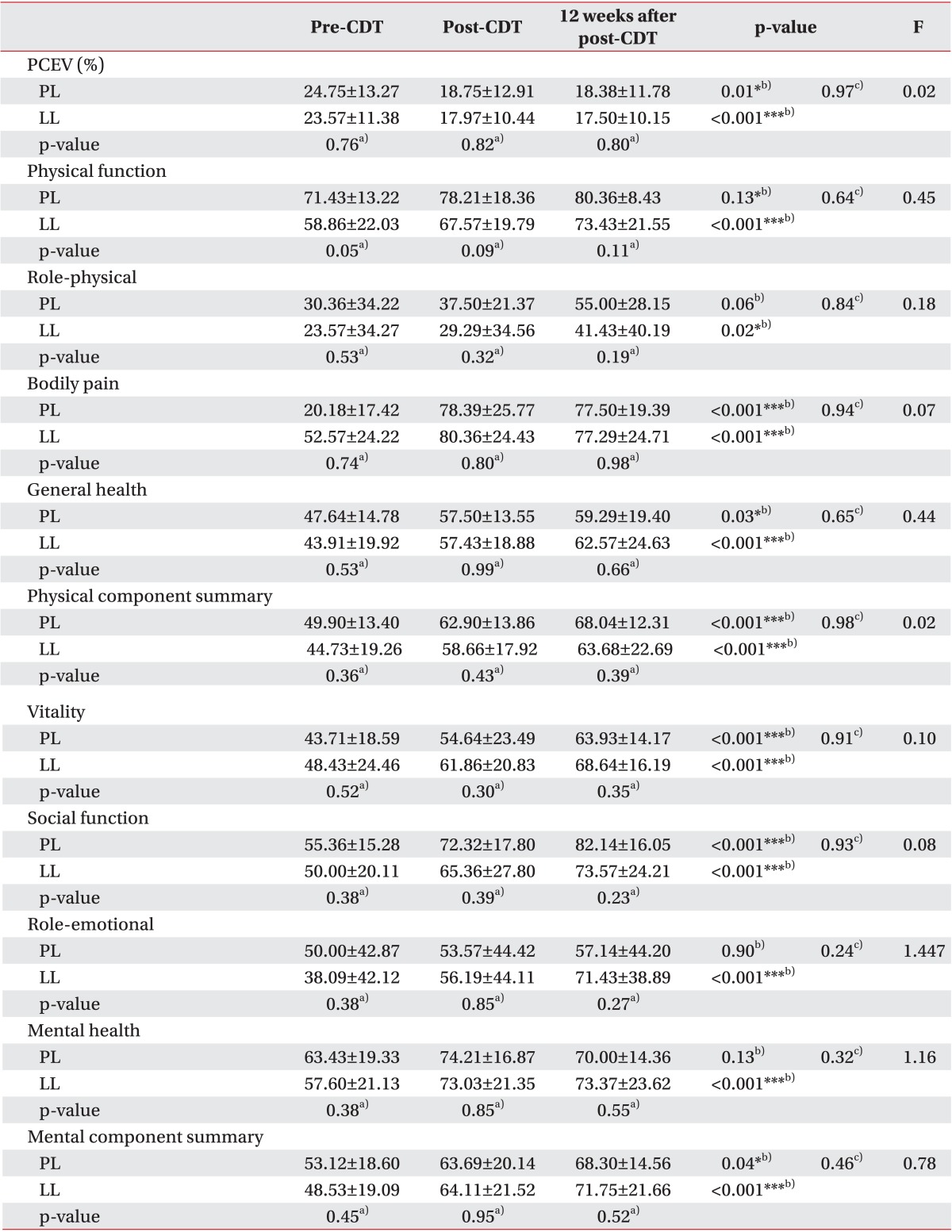
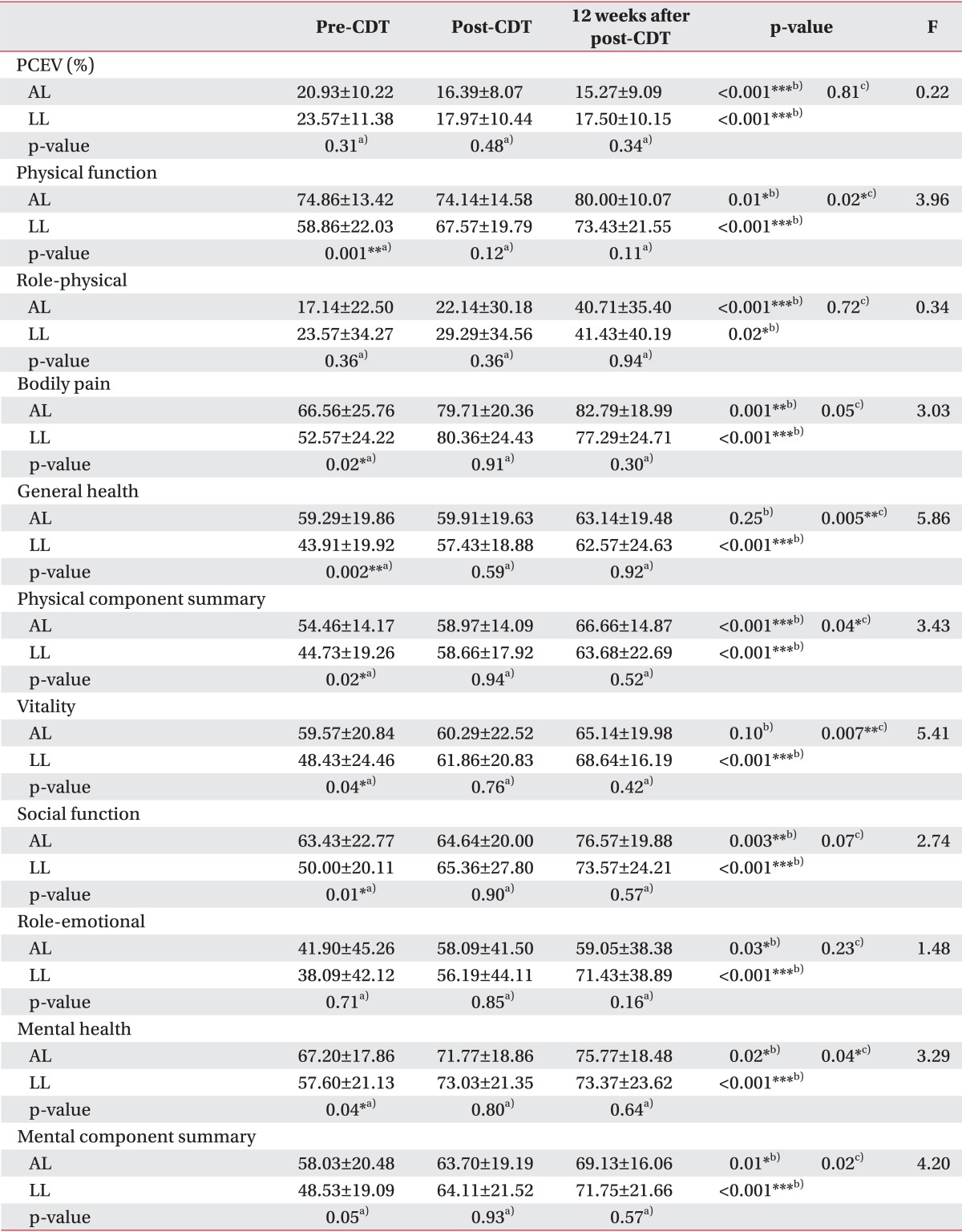
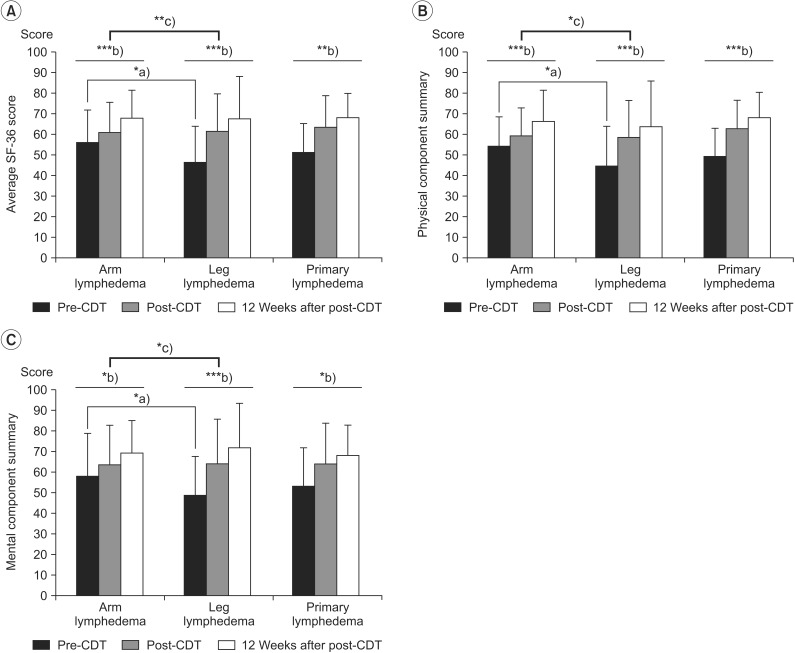




 PDF
PDF ePub
ePub Citation
Citation Print
Print





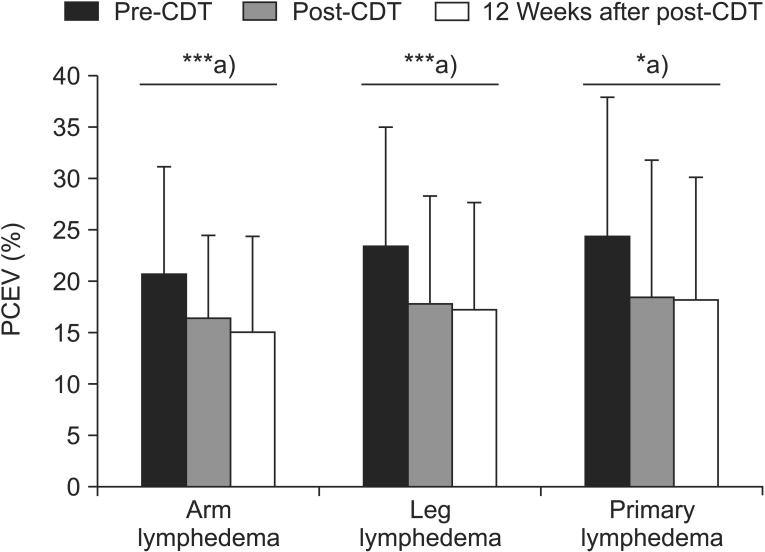
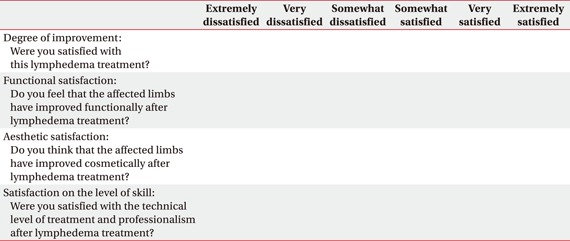
 XML Download
XML Download